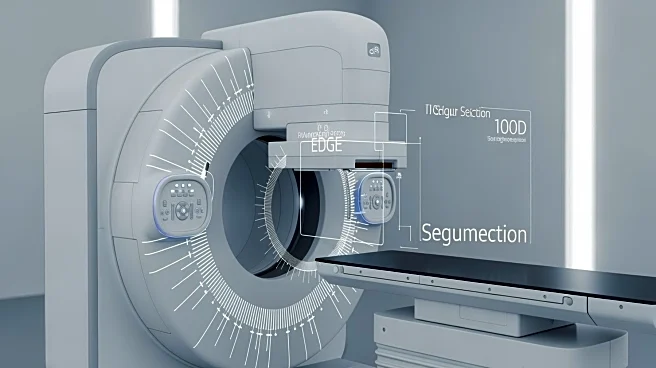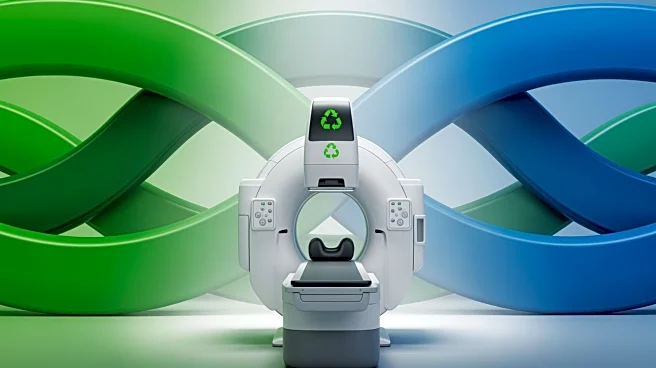What's Happening?
Researchers at the University of Southampton have developed an artificial intelligence (AI) tool designed to enhance the detection of hard-to-see objects lodged in patients' airways, outperforming expert
radiologists. The study, published in npj Digital Medicine, highlights the AI model's ability to identify foreign body aspiration (FBA) cases that are often missed due to their radiolucent nature, meaning they are invisible on X-rays and faint on CT scans. The AI model, which combines a high-precision airway mapping technique (MedpSeg) with a neural network, was tested on over 400 patients in collaboration with hospitals in China. It demonstrated a higher detection rate compared to radiologists, identifying 71% of FBA cases versus the radiologists' 36%. The research team, led by Dr. Yihua Wang, Dr. Zehor Belkhatir, and Prof Rob Ewing, aims to conduct further studies to refine the model and reduce bias.
Why It's Important?
The development of this AI tool is significant as it addresses the challenge of diagnosing foreign body aspiration, a condition that can lead to serious complications if not detected early. By improving the detection rate of radiolucent foreign bodies, the AI model offers a potential solution to reduce missed or delayed diagnoses, thereby enhancing patient safety and outcomes. This advancement in medical technology underscores the growing role of AI in healthcare, providing support to clinicians in diagnosing complex conditions. The tool is designed to assist radiologists, offering an additional layer of confidence in cases that are difficult to diagnose through standard imaging techniques.
What's Next?
The researchers plan to conduct multi-centre studies involving larger and more diverse populations to further improve the AI model and minimize the risk of bias. These studies will aim to validate the tool's effectiveness across different clinical settings and patient demographics. The ongoing development and refinement of AI in medical diagnostics could lead to broader applications in detecting other conditions that are challenging to diagnose, potentially transforming clinical practice and improving healthcare delivery.
Beyond the Headlines
The integration of AI in medical diagnostics raises ethical considerations regarding the balance between human expertise and machine assistance. While AI tools can enhance diagnostic accuracy, they also necessitate careful oversight to ensure they complement rather than replace human judgment. Additionally, the reliance on AI models requires robust data privacy measures to protect patient information, highlighting the need for ethical guidelines in the deployment of AI technologies in healthcare.













